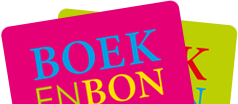Lezersrecensie
historical photographic mystery
As this book focuses on photography, it’s interesting to know some exciting new technologies of the era (no, I don’t plan to do this for every historical book I read):
- more or less ‘modern’ typewriters made by Remington in 1873 where the writer could see what he typed
- 1878 – Heat ripening of gelatine emulsions is discovered. This greatly increases sensitivity and makes possible very short "snapshot" exposures.
- 1888 - Kodak made the first ‘easy to use’ box-camera and 10 years later the first folding camera
- 1889 – The first commercially available transparent celluloid roll film is introduced by the Eastman Company,
- The phonograph was invented in 1877 by Thomas Edison. Alexander Graham Bell made several improvements in the 1880s and introduced the graphophone.
- On March 7, 1876, Bell was granted an telephone patent A few days later, he made the first-ever telephone call to Watson
- It’s also the time that the first experimental moving pictures are made. At the end of the book, Juan contemplates following this direction.
- Also invented in different places are several mechanisms that increase the efficiency of automatic rifles.
1897
Cuba is in turmoil because of rebels fighting for independence against the Spanish government troops. A few months later the Spanish-American war breaks out and Cuba will be occupied by the Americans. The photographers Juan Camaron and his father travel around the island on horseback. They’re commissioned to photograph and document the island’s buildings by a Scottish company and have done this for 2 years. They also make portraits of people when asked to do so. At the same time, his grandfather left them a plantation on the island that’s managed by a cousin. When the war breaks out they’re staying at this farm. When his father, his cousin and the cousin's unpleasant wife all died in the hostilities, Juan decides to sell the property. From the notary, he finds out that -through his Scottish mother- he also inherits a piece of land on the Isle of Bute in the Firth of Clyde in western Scotland.
When he’s in Glasgow, Juan is introduced to Dr Harrison who talks about the outbreak of the plague in the city. This took place in 1900, so 2 years after he was in Cuba. So the events of the book should be dated later than the epidemic.
In Scotland, he befriends Morton, an associate of the Cuban notary and an inventor. They discover something important; that events can be understood through photographs when you take 2 or more photos on 1 spot and compare them. It’s a whole new manner of looking at the world. They start to experiment with this idea and it’s amazing what they can learn from comparing the pictures of the same scene taken at different times. They call it serial photography His method is not based on capturing everything that happens or catching the criminal in his act but it is based on patterns of what might have happened in the great stretches of time and activity that have not been recorded, of the environment in which a crime is committed and extrapolate valuable information from that. With the help of the technical director of Morton’s typewriter company they even produce an automatic camera with a timer. The photos taken during one of those experiments help solve a murder. Not long after this success, the police ask for his help. In an unfavourable neighbourhood of Glasgow, there have been 5 gruesome murders and one lucky escape in 6 months. All victims were found in a very small area, an ideal situation to rig up some of Juan’s new cameras.
Apart from the background stories and family history, it takes a large section of the book to explain the details of the discoveries and inventions of this new practice. But I think it’s necessary for the first book in a series to offer this background to remain realistic. The technical explanations slow down the narrative a bit, but this didn’t feel like a negative experience and it even was fairly interesting. I’d classify the book as historical fiction with a murder mystery as an extra asset.
As the occupation of the main character is photographer, it’s no surprise that the descriptions of scenes and the details within them are very visual. You can see the picture develop right before your eyes and when Juan compares one frame with the next it’s almost as if you’re watching a movie. And it’s not a modern HD motion picture that I imagine, but the time-proper sepia coloured historical photos be it of a building, a street-scene, a portrait of the wealthy or a poorer bystander caught in his daily activities. After all Juan is still working with the glass plates, before the celluloid film became widely available. Somewhere in the book, he tells that it’s not the camera’s that weigh so much but the glass plates. Those are of course breakable and are costly. The first can’t be helped but Juan cut the costs by using separate sections of 1 plate for different photos. I’m not an expert and can’t comment on the reality and possibility level of his discoveries and improvements, but to me, they do sound plausible.
I enjoyed this book from start to end, the first chapters move a bit slow in order to sketch the circumstances and background of the main character and how he came to be involved with the murder inquiry in Scotland. This character is extremely sympathetic and I sincerely hope this is the first book in a long series as I’m very curious as to how things in his life will evolve. There is the inheritance on the isle of Bute and also the hope on a blossoming love affair.
- more or less ‘modern’ typewriters made by Remington in 1873 where the writer could see what he typed
- 1878 – Heat ripening of gelatine emulsions is discovered. This greatly increases sensitivity and makes possible very short "snapshot" exposures.
- 1888 - Kodak made the first ‘easy to use’ box-camera and 10 years later the first folding camera
- 1889 – The first commercially available transparent celluloid roll film is introduced by the Eastman Company,
- The phonograph was invented in 1877 by Thomas Edison. Alexander Graham Bell made several improvements in the 1880s and introduced the graphophone.
- On March 7, 1876, Bell was granted an telephone patent A few days later, he made the first-ever telephone call to Watson
- It’s also the time that the first experimental moving pictures are made. At the end of the book, Juan contemplates following this direction.
- Also invented in different places are several mechanisms that increase the efficiency of automatic rifles.
1897
Cuba is in turmoil because of rebels fighting for independence against the Spanish government troops. A few months later the Spanish-American war breaks out and Cuba will be occupied by the Americans. The photographers Juan Camaron and his father travel around the island on horseback. They’re commissioned to photograph and document the island’s buildings by a Scottish company and have done this for 2 years. They also make portraits of people when asked to do so. At the same time, his grandfather left them a plantation on the island that’s managed by a cousin. When the war breaks out they’re staying at this farm. When his father, his cousin and the cousin's unpleasant wife all died in the hostilities, Juan decides to sell the property. From the notary, he finds out that -through his Scottish mother- he also inherits a piece of land on the Isle of Bute in the Firth of Clyde in western Scotland.
When he’s in Glasgow, Juan is introduced to Dr Harrison who talks about the outbreak of the plague in the city. This took place in 1900, so 2 years after he was in Cuba. So the events of the book should be dated later than the epidemic.
In Scotland, he befriends Morton, an associate of the Cuban notary and an inventor. They discover something important; that events can be understood through photographs when you take 2 or more photos on 1 spot and compare them. It’s a whole new manner of looking at the world. They start to experiment with this idea and it’s amazing what they can learn from comparing the pictures of the same scene taken at different times. They call it serial photography His method is not based on capturing everything that happens or catching the criminal in his act but it is based on patterns of what might have happened in the great stretches of time and activity that have not been recorded, of the environment in which a crime is committed and extrapolate valuable information from that. With the help of the technical director of Morton’s typewriter company they even produce an automatic camera with a timer. The photos taken during one of those experiments help solve a murder. Not long after this success, the police ask for his help. In an unfavourable neighbourhood of Glasgow, there have been 5 gruesome murders and one lucky escape in 6 months. All victims were found in a very small area, an ideal situation to rig up some of Juan’s new cameras.
Apart from the background stories and family history, it takes a large section of the book to explain the details of the discoveries and inventions of this new practice. But I think it’s necessary for the first book in a series to offer this background to remain realistic. The technical explanations slow down the narrative a bit, but this didn’t feel like a negative experience and it even was fairly interesting. I’d classify the book as historical fiction with a murder mystery as an extra asset.
As the occupation of the main character is photographer, it’s no surprise that the descriptions of scenes and the details within them are very visual. You can see the picture develop right before your eyes and when Juan compares one frame with the next it’s almost as if you’re watching a movie. And it’s not a modern HD motion picture that I imagine, but the time-proper sepia coloured historical photos be it of a building, a street-scene, a portrait of the wealthy or a poorer bystander caught in his daily activities. After all Juan is still working with the glass plates, before the celluloid film became widely available. Somewhere in the book, he tells that it’s not the camera’s that weigh so much but the glass plates. Those are of course breakable and are costly. The first can’t be helped but Juan cut the costs by using separate sections of 1 plate for different photos. I’m not an expert and can’t comment on the reality and possibility level of his discoveries and improvements, but to me, they do sound plausible.
I enjoyed this book from start to end, the first chapters move a bit slow in order to sketch the circumstances and background of the main character and how he came to be involved with the murder inquiry in Scotland. This character is extremely sympathetic and I sincerely hope this is the first book in a long series as I’m very curious as to how things in his life will evolve. There is the inheritance on the isle of Bute and also the hope on a blossoming love affair.
1
Reageer op deze recensie












